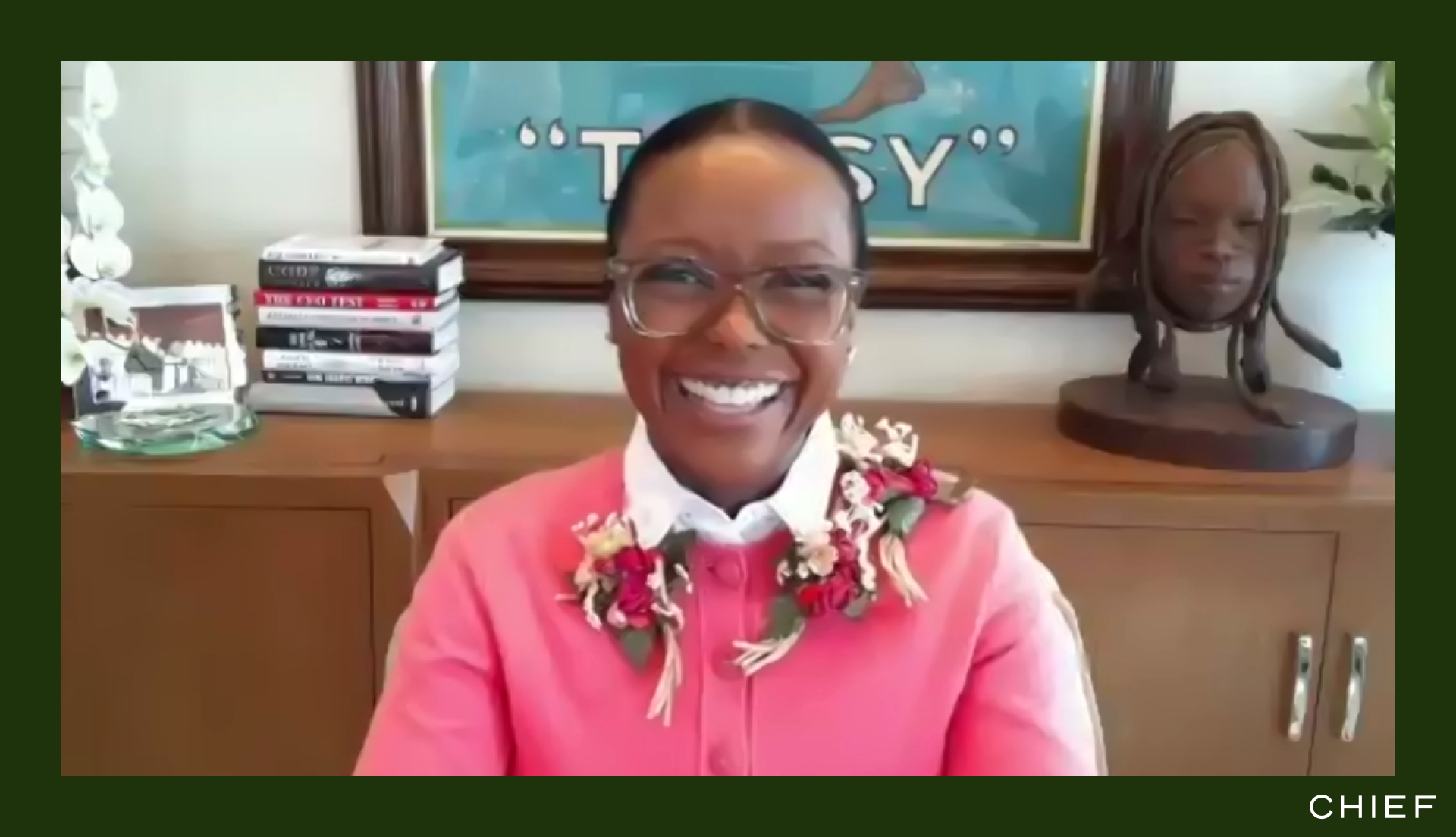After a year that fundamentally changed the way we think about work, family, and, well … everything else, one common throughline is that women in the executive suite across industries rose to the challenge. This isn’t surprising; it’s happened before. In the aftermath of the 2007-2008 financial crisis, for instance, as companies grappled with how to recover and innovate, it was clear that the traditional C-Suite needed a dramatic shake up. Consumers, shareholders, and employees wanted a few basic things: transparency, inclusion, and a commitment to corporate responsibility.
When you look at the traditional ranks of executive leadership, the roles were directly related to profit and loss, like Chief Financial Officer and Chief Investment Officer. These are also roles that have traditionally (and still are) disproportionately held by men. But as business evolves, women have been at the forefront of a new kind of executive leadership, taking on positions that didn’t exist a decade ago: Chief Inclusion Officer, Chief Ethics Officer, Chief Sustainability Officer. A recent Deloitte study found that in 2019, women filled 32.5% of these emerging C-Suite roles compared to the 27% of women in “traditional” C-Suite roles.
As the pandemic has made clear, these emerging roles are crucial to a company’s ability to stay nimble. Here’s a fun thought exercise: Imagine the stuffy boardroom of old handling the rapid pivot to remote work during the pandemic, or navigating our transforming political and social climate. Not a pretty picture. But even as these emerging positions have proven their worth in real time, there isn’t yet an established blueprint for leveraging this change into a path that leads to CEO. And we need one.
Follow the Money
"As markets and corporate priorities evolve, so do titles. But one thing remains constant: If you want to know where the power lies, follow the money,” says Heather Arnet, CEO of the Women and Girls Foundation. "For women seeking future positions as CEOs, C-Suite positions (such as Chief Inclusion Officer or Chief Brand Officer) can transform into future leadership opportunities when women are able to connect diversity, inclusion, and retention goals to economic benchmarks and improved fiscal performance outcomes for their current employers."
Echoing Arnet, Dr. Chloe Carmichael, psychologist and author of Harness the Power of Your Anxiety, explains that it’s necessary to connect the dots between how your work relates directly to the company’s profit margins. For instance, for those in the diversity and inclusion space, Carmichael suggests enthusiastically demonstrating the ways in which growing and retaining the best, most vibrant team provides key insights into how to intellectually and cognitively respond to changing markets and needs. Or as the head of brand, showcasing how a deep understanding of a company’s brand relates directly to a holistic and profitable vision of exactly what the markets are responsive to and share how best to harness that information.
Share Your Vision
“A CEO is fundamentally a person with a vision,” says Carmichael. “Put your vision on the table loud and clear to establish how your role directly translates into creating fiscal growth for the company in new and exciting ways.”
To that end, she advises: “Don’t hide the ball. If you are hired as a Chief Marketing Officer or Chief Brand Officer make it clear that your passion for that role includes a desire for career advancement and a trajectory to CEO.”
In her practice and in her book, Carmichael suggests “narrating your experience” when you are up for a position or seeking advancement by clearly articulating the ways in which you see your role in one of the emerging C-Suite roles eventually transitioning to the CEO spot. Communicate it vividly enough that others can see it as clearly as you do. Carmichael advises that it’s best to consider timing your narrative appropriately, such as when a company is trying to hire you, or is in active expansion mode.
Arnett agrees in the narrative approach, telling Chief, “If you can have an established track record of using your transferable skills to reach financial goals, you aren’t ‘proving’ yourself because your proven experience is exactly what their company needs to succeed.”
Articulate Your Value Add as a Woman
The prevailing narrative has been that women burn out of executive roles because they face an unequal work-life burden. Is this true? Any of us who have had to juggle the care of children or senior parents, a social life, career advancement, (and, oh I don’t know – sleep?) would agree that it’s difficult. But the notion that women simply aren’t equipped for the pace of executive work creates a damaging narrative — one that persists despite growing gender parity in the C-Suite. And it’s clear we need more women at the top. One recent study from Girls In Tech found that those who worked for a company with a woman CEO were less likely to have felt burned out during the pandemic.
With the pandemic’s end in sight, it’s still important to remember that change is always on the horizon. Women have always been expected to juggle their personal and professional lives, and with that expectation we’ve become nimbler and are primed to anticipate change as just another part of our professional advancement. Women, therefore, are on the forefront of creating teams that are more equitable, and are positioned to take the boardroom into the future. We just need to use the skills that have brought us this far up the executive ladder.
By effectively communicating your holistic vision for success, thoughtfully leveraging your experience across the company and acknowledging the inherent value of executive gender parity, the top spot is well within your reach.
Read Next: Strategic Mindset, the Sister of Growth Mindset, Is Here to Stay
